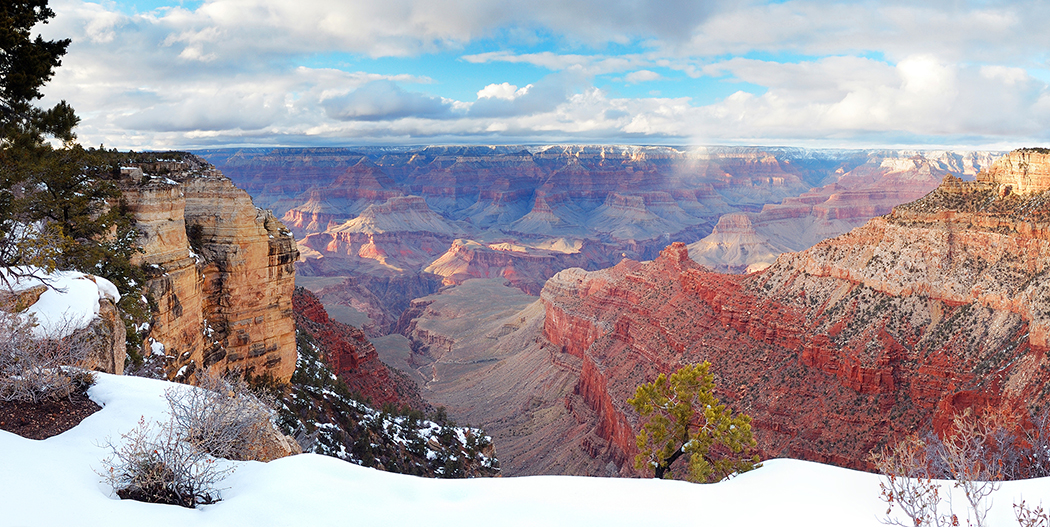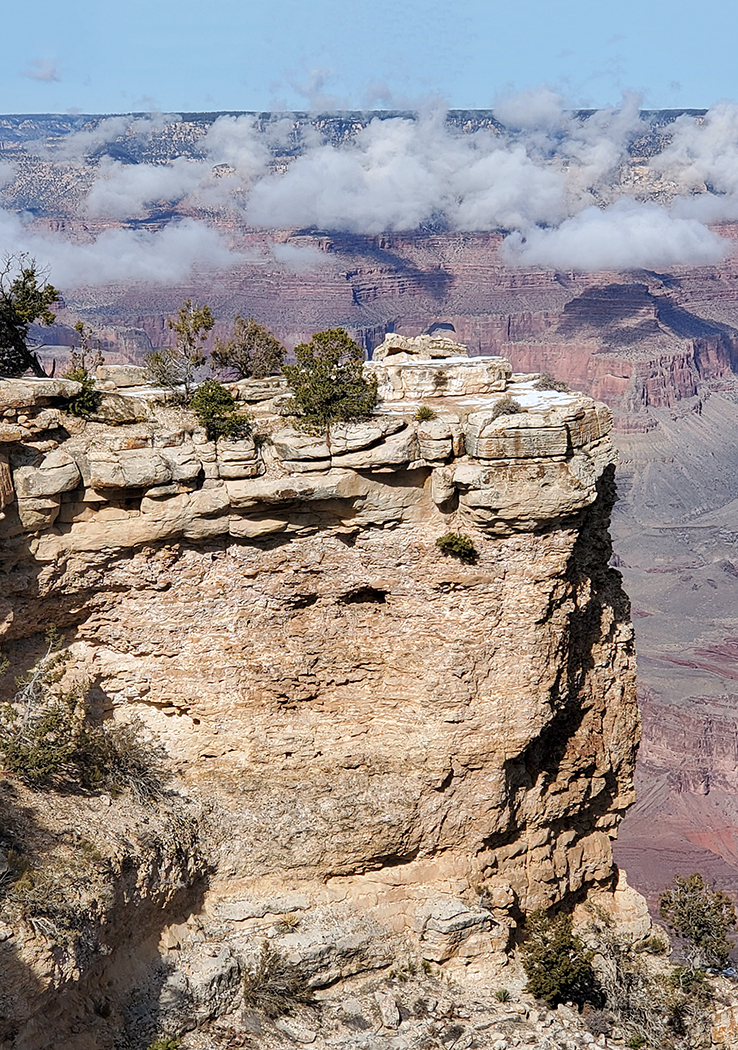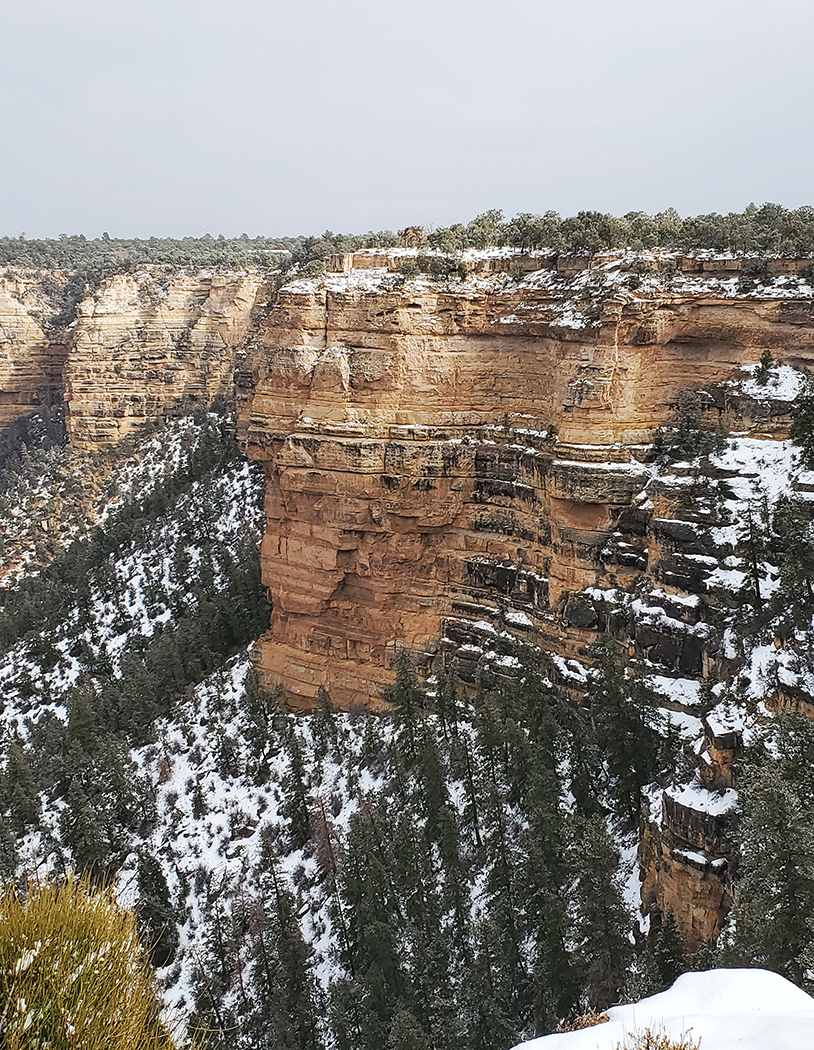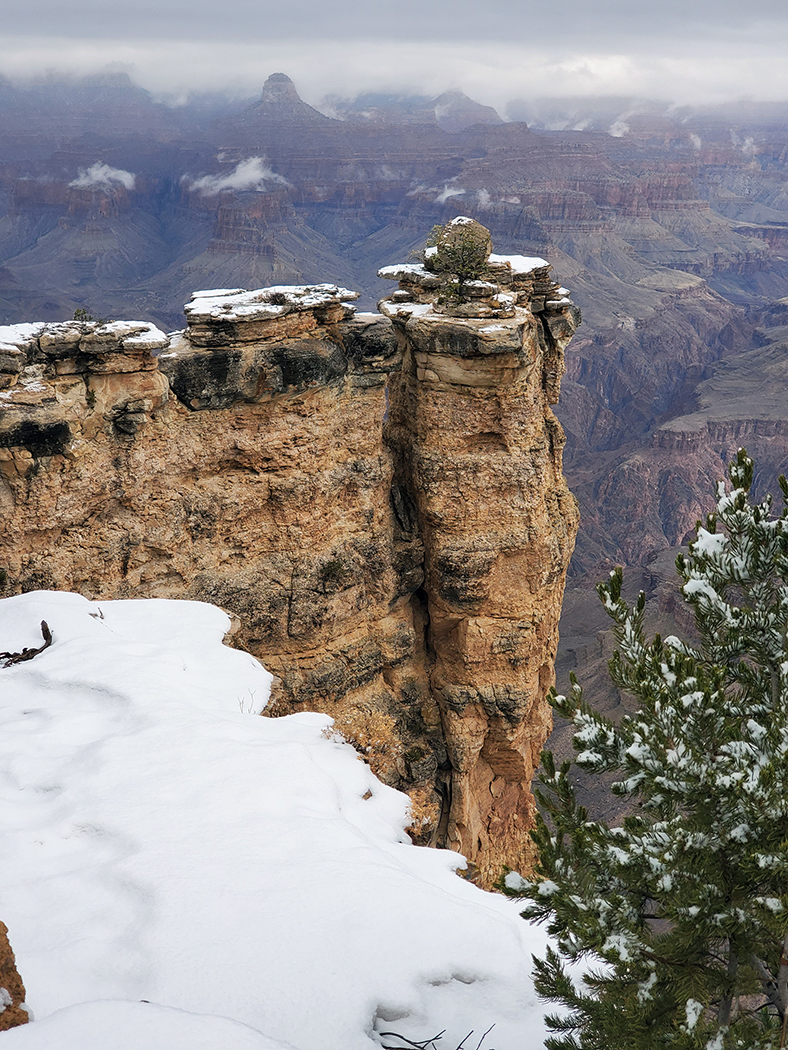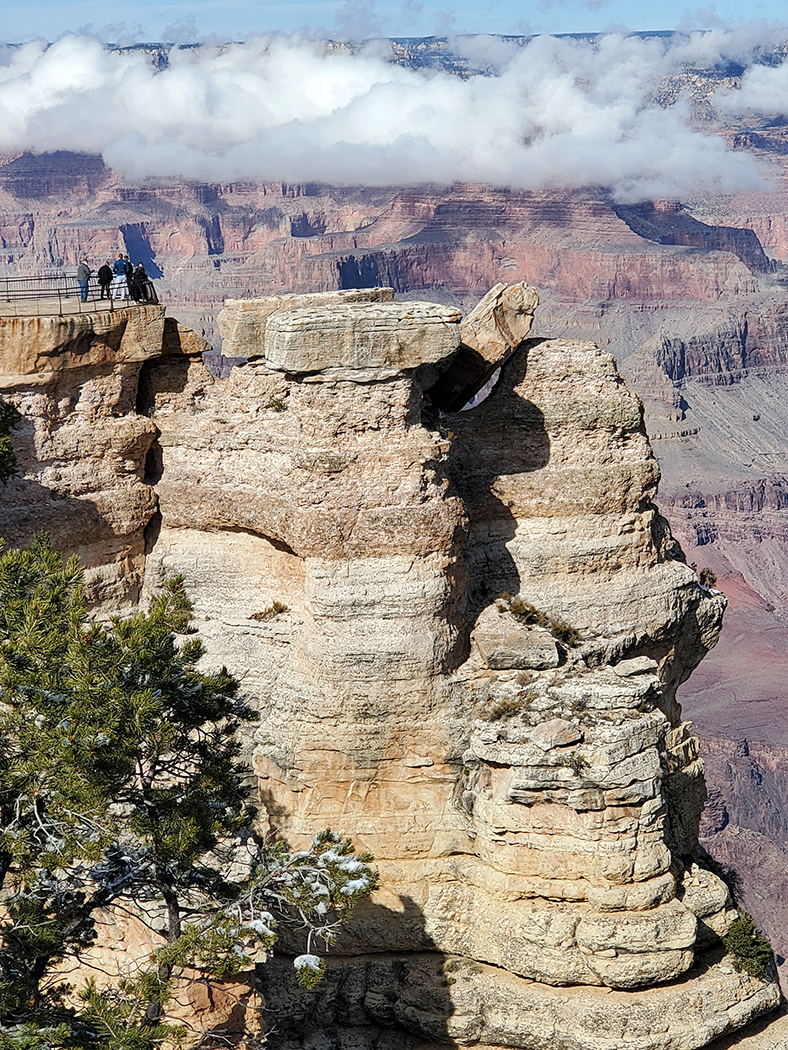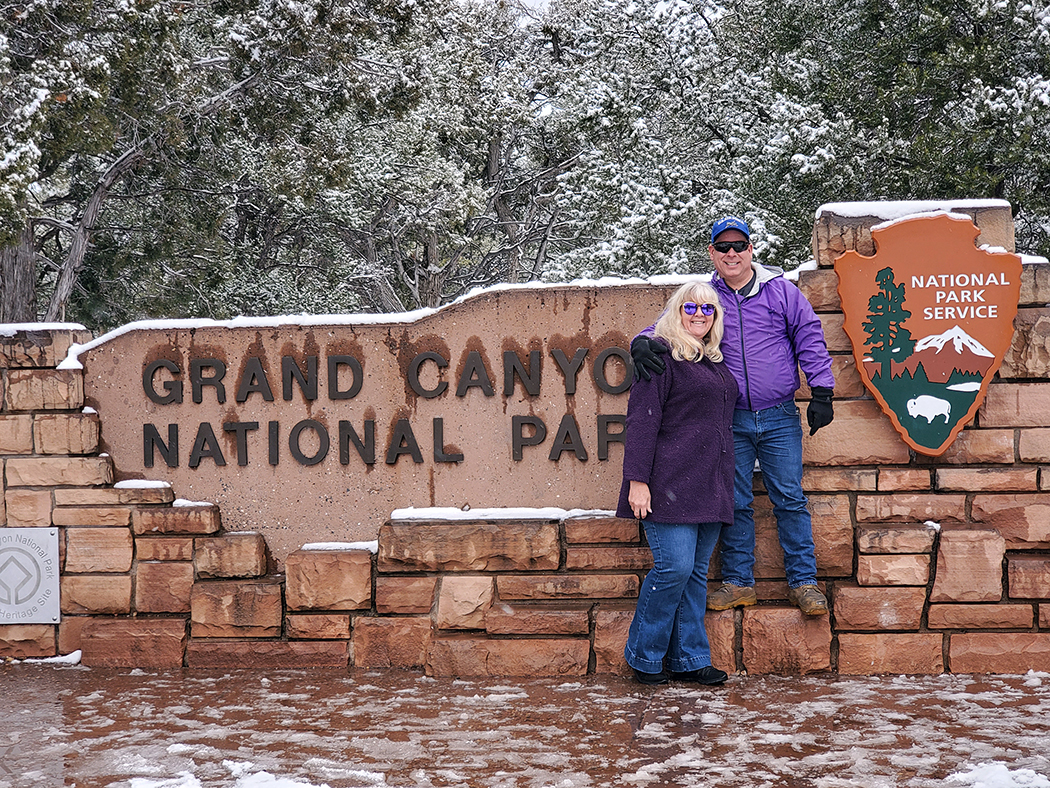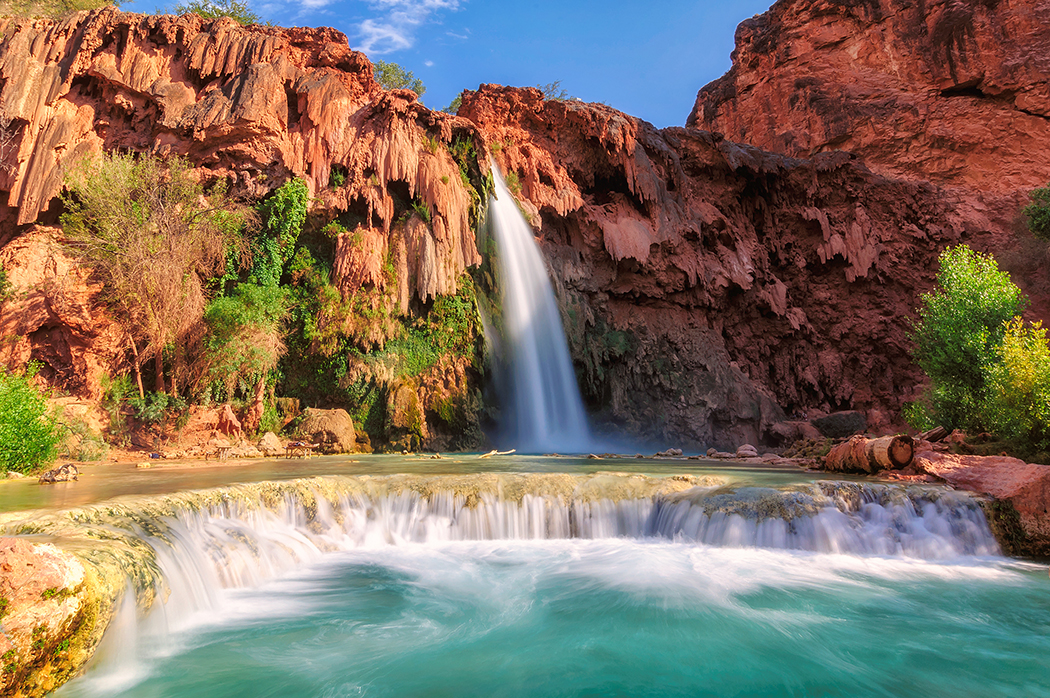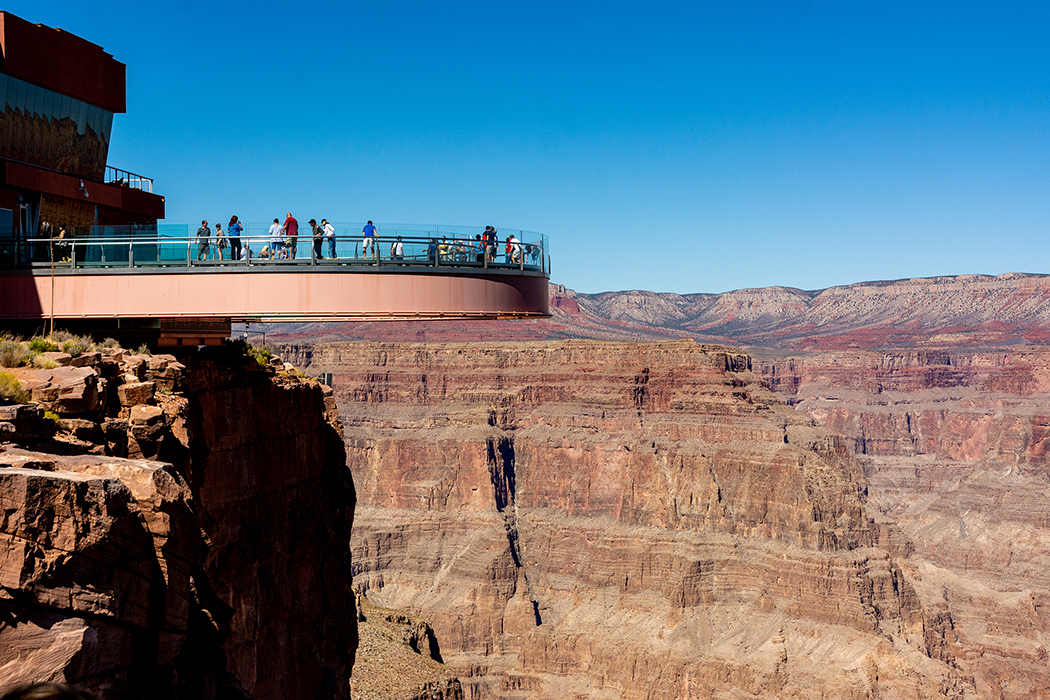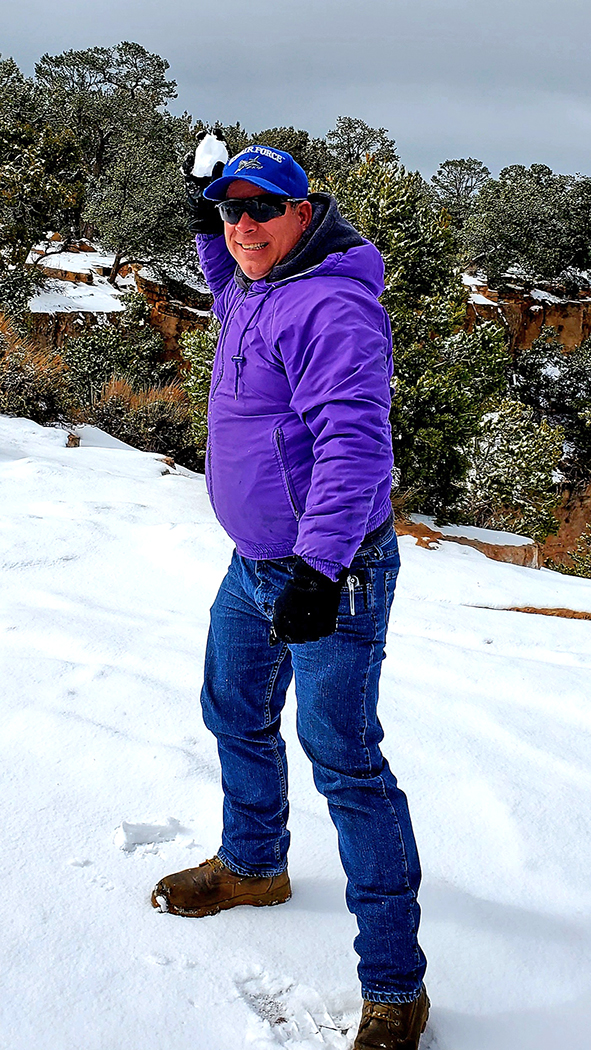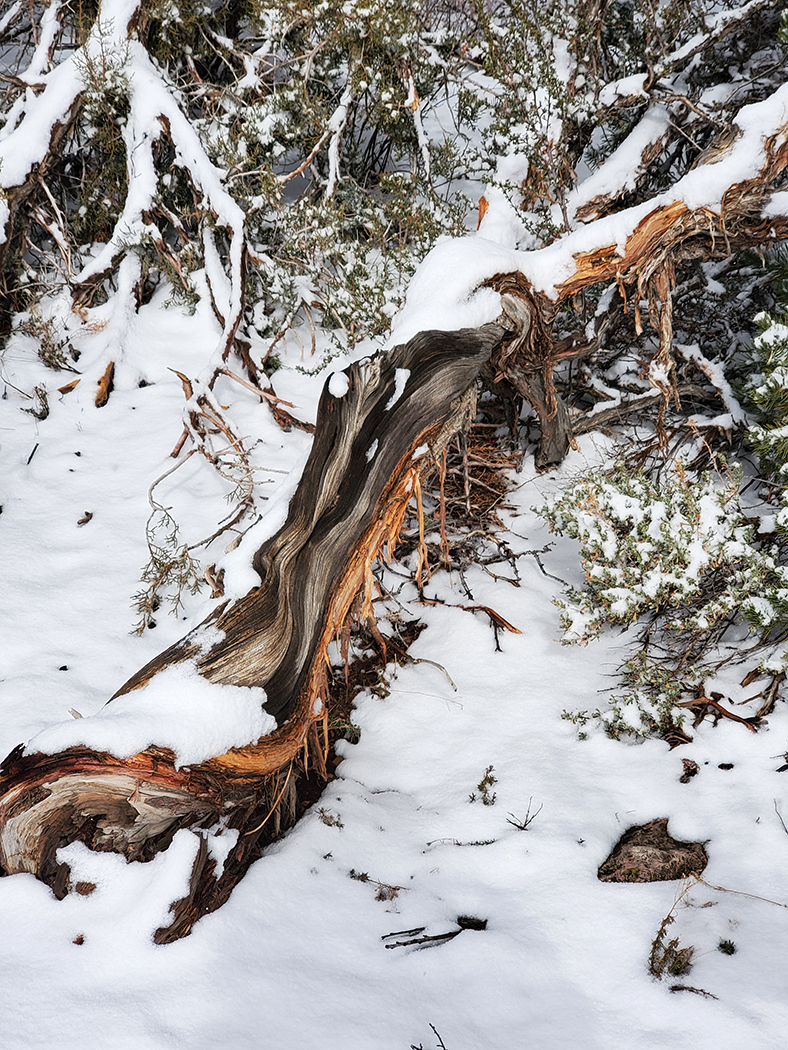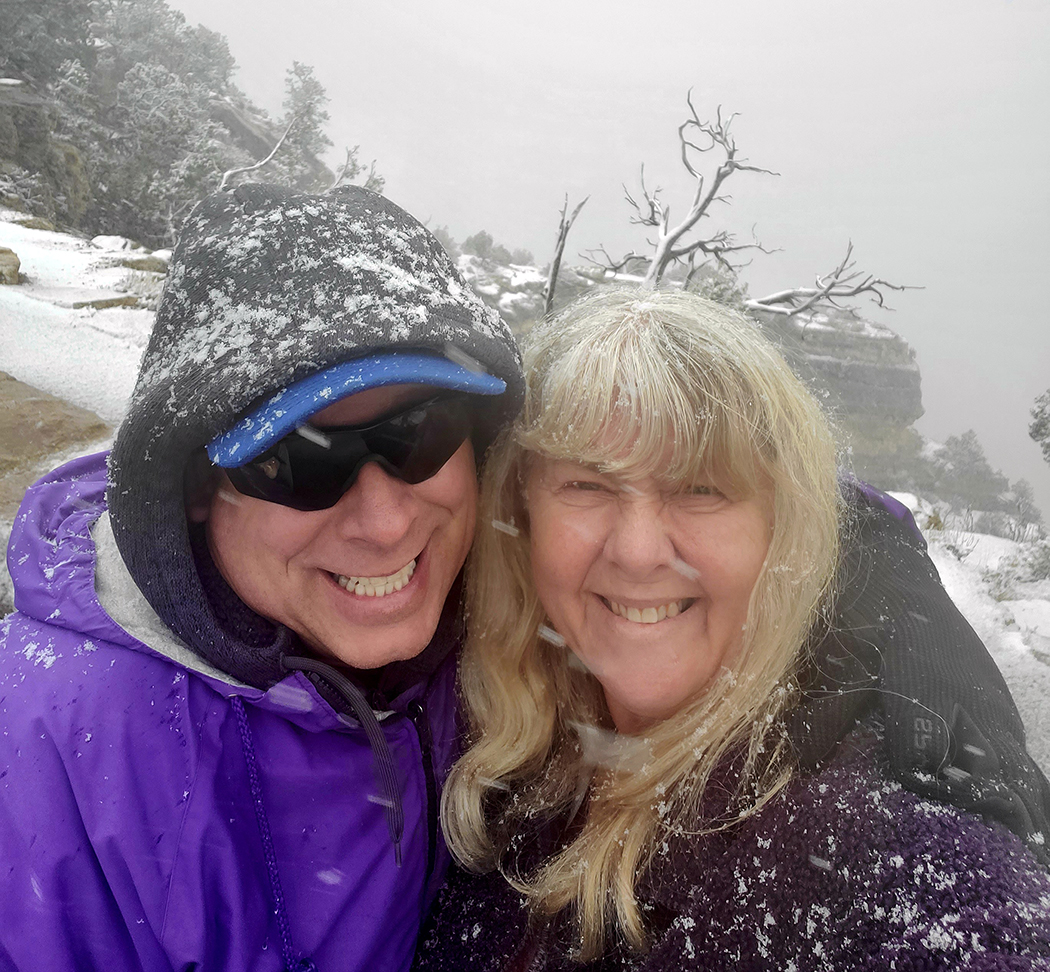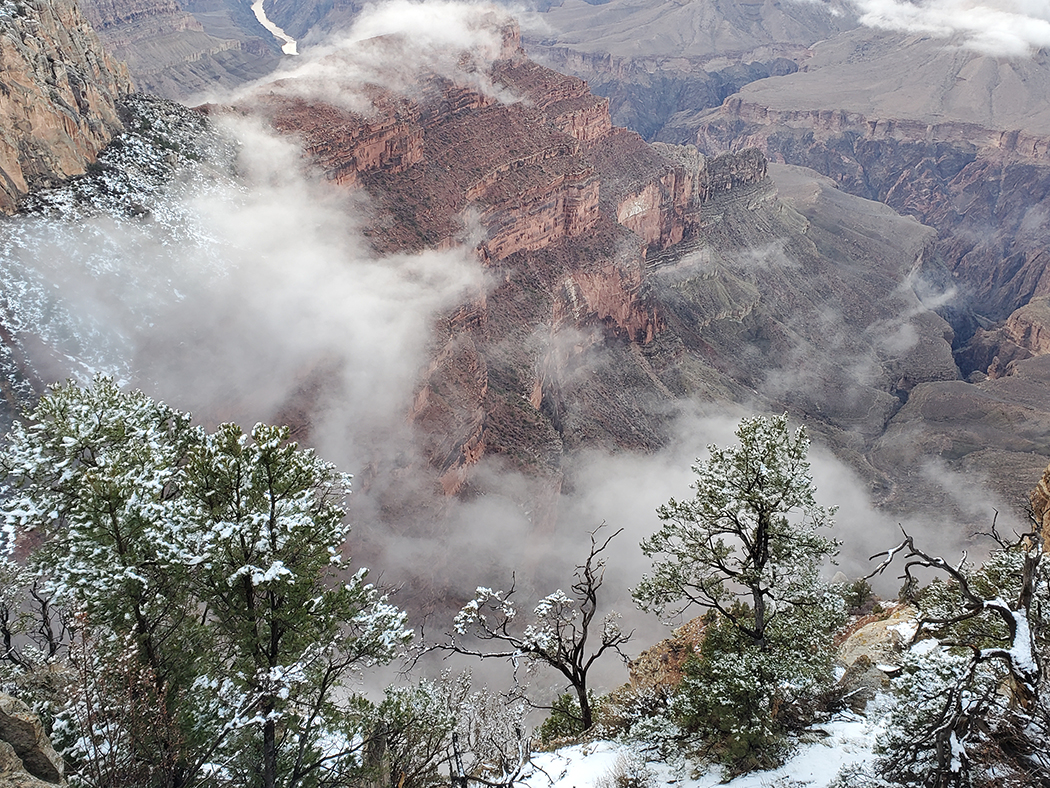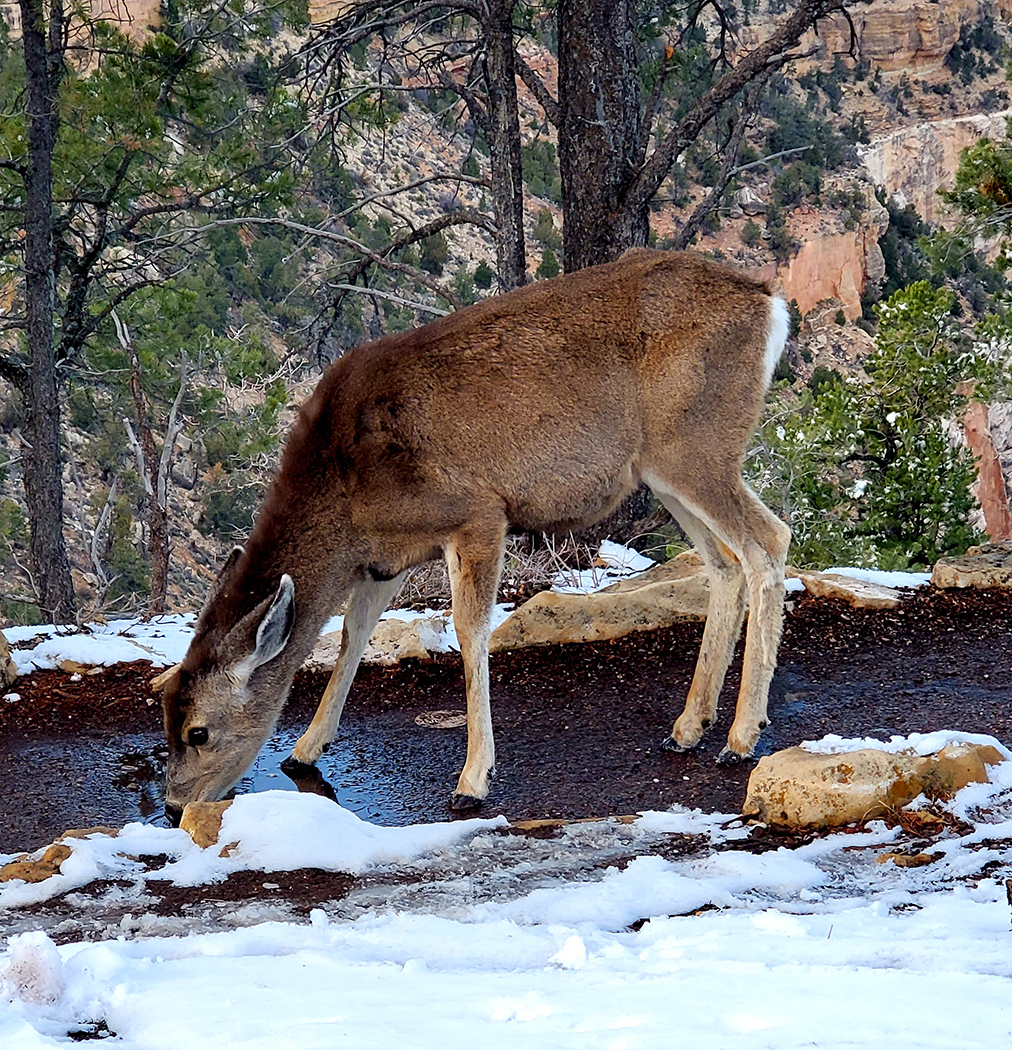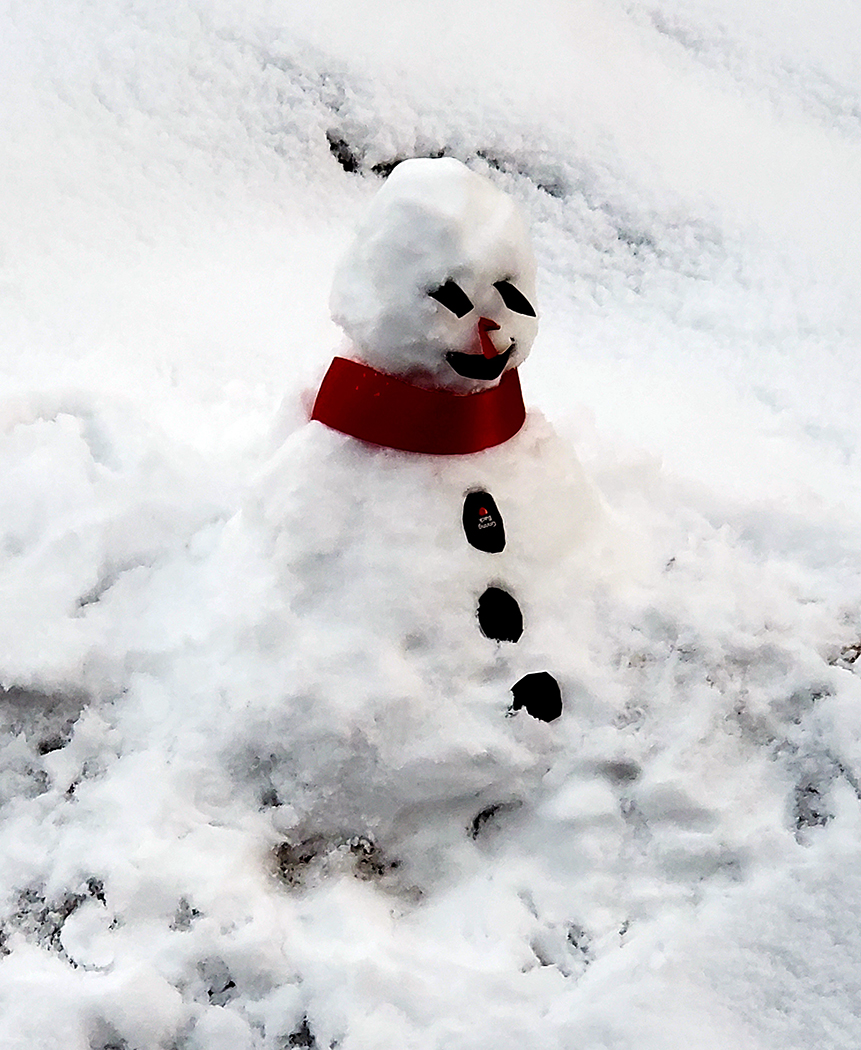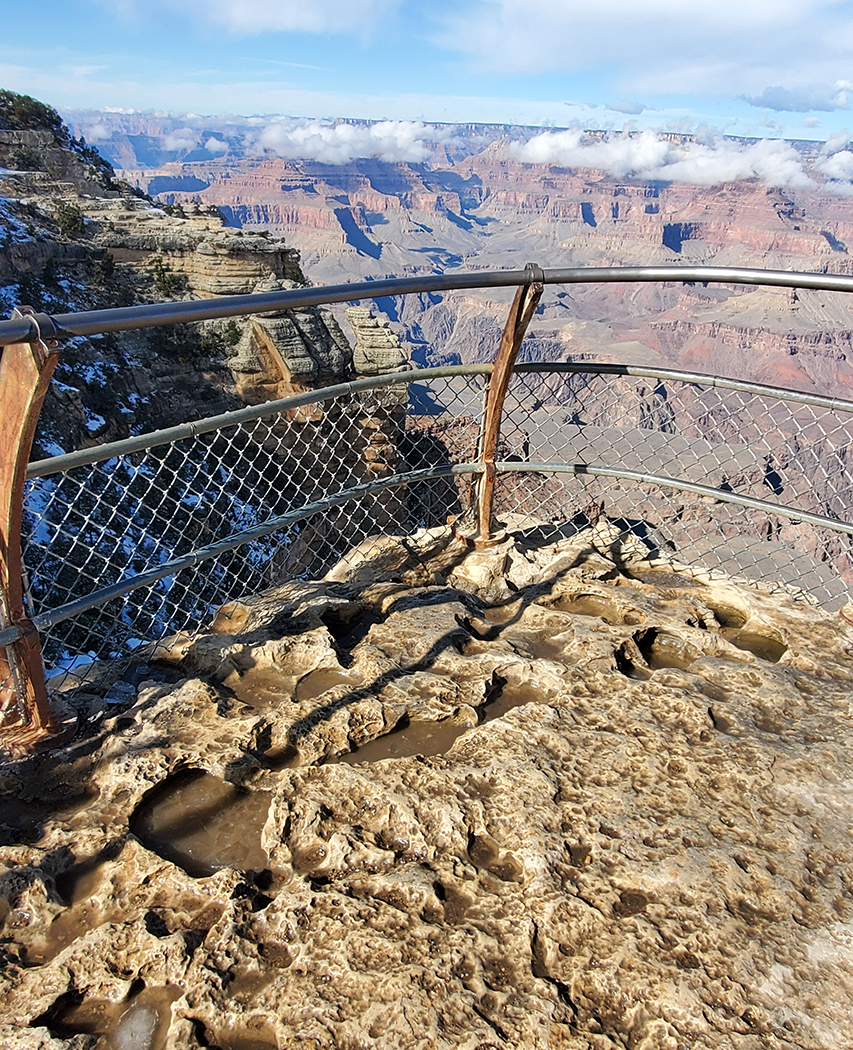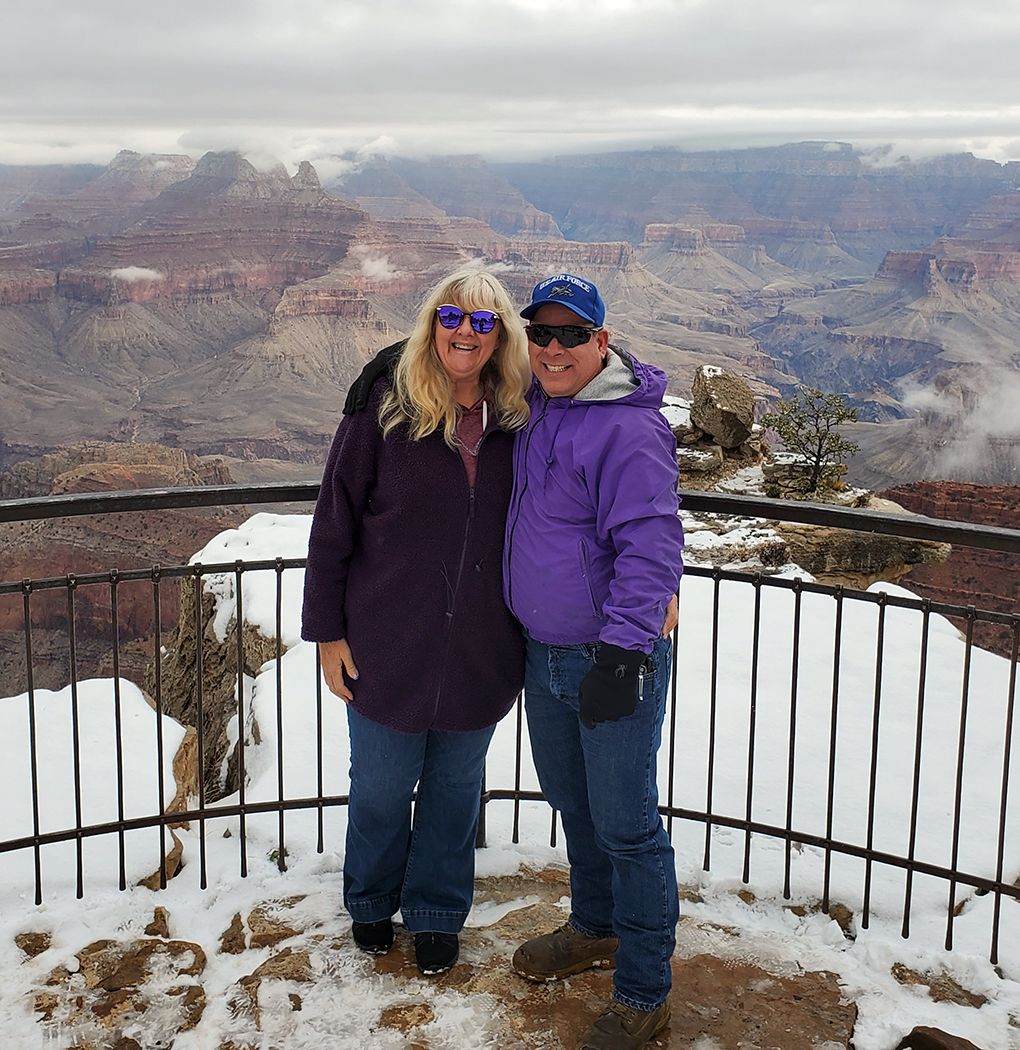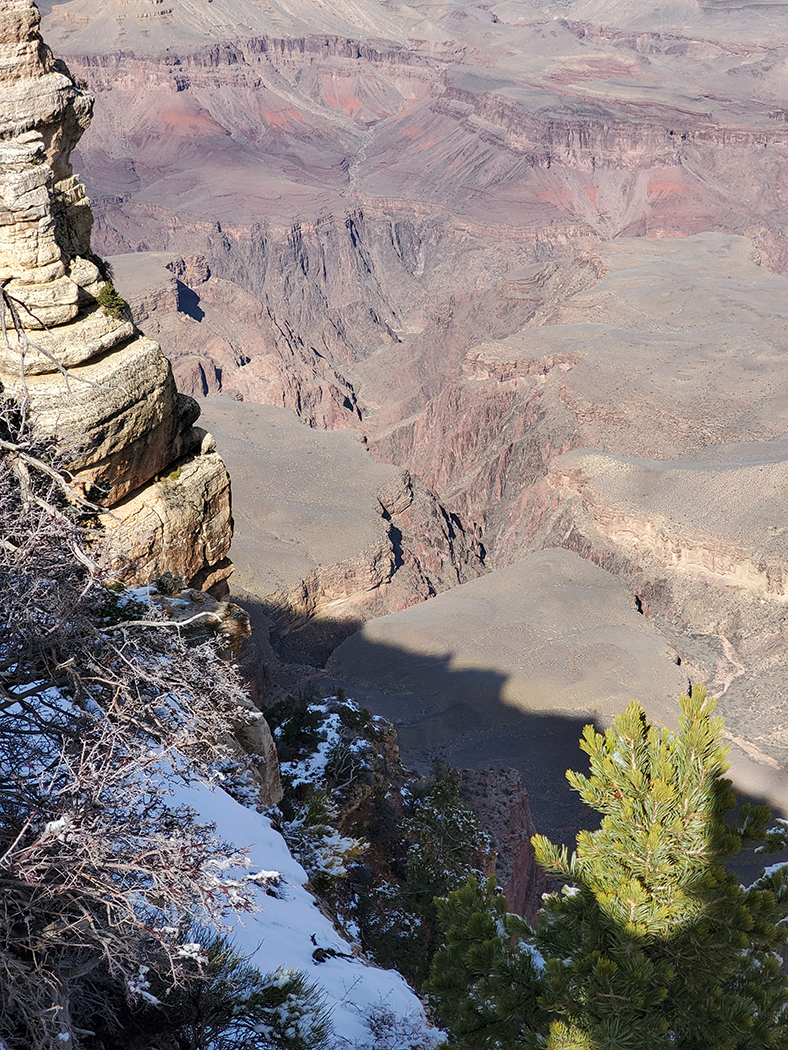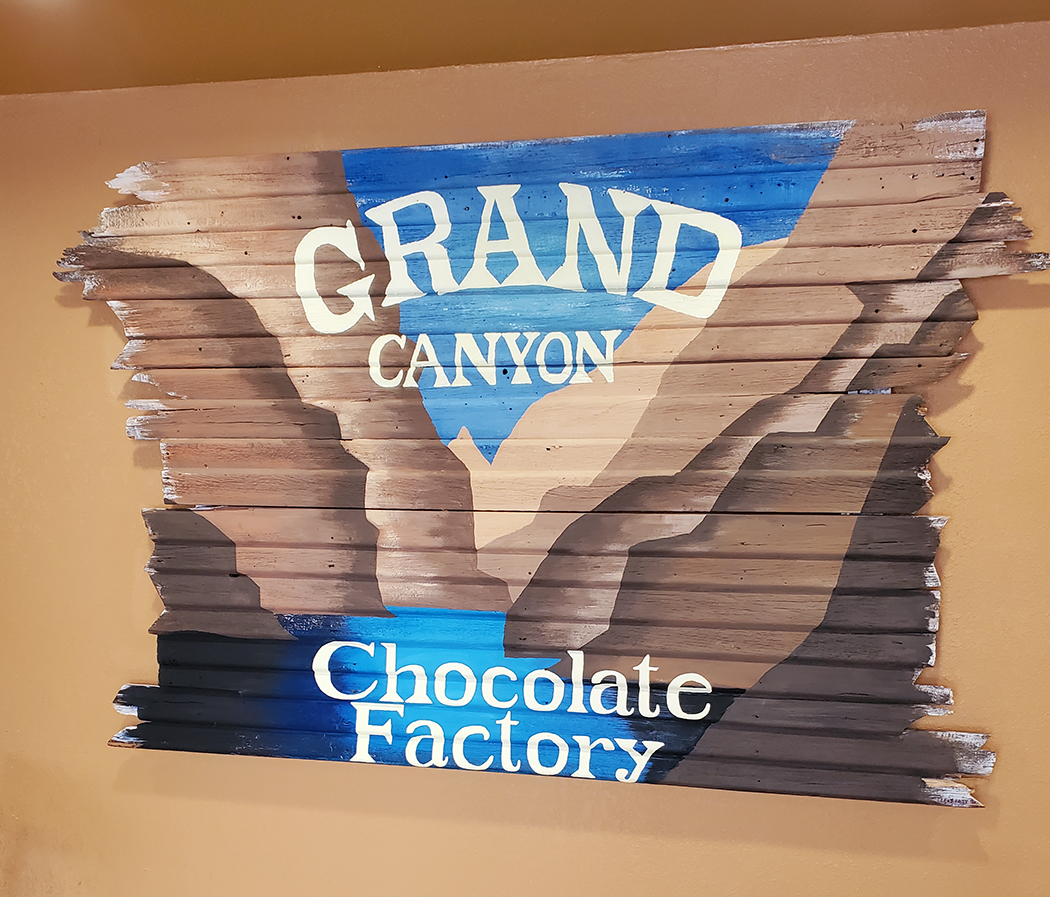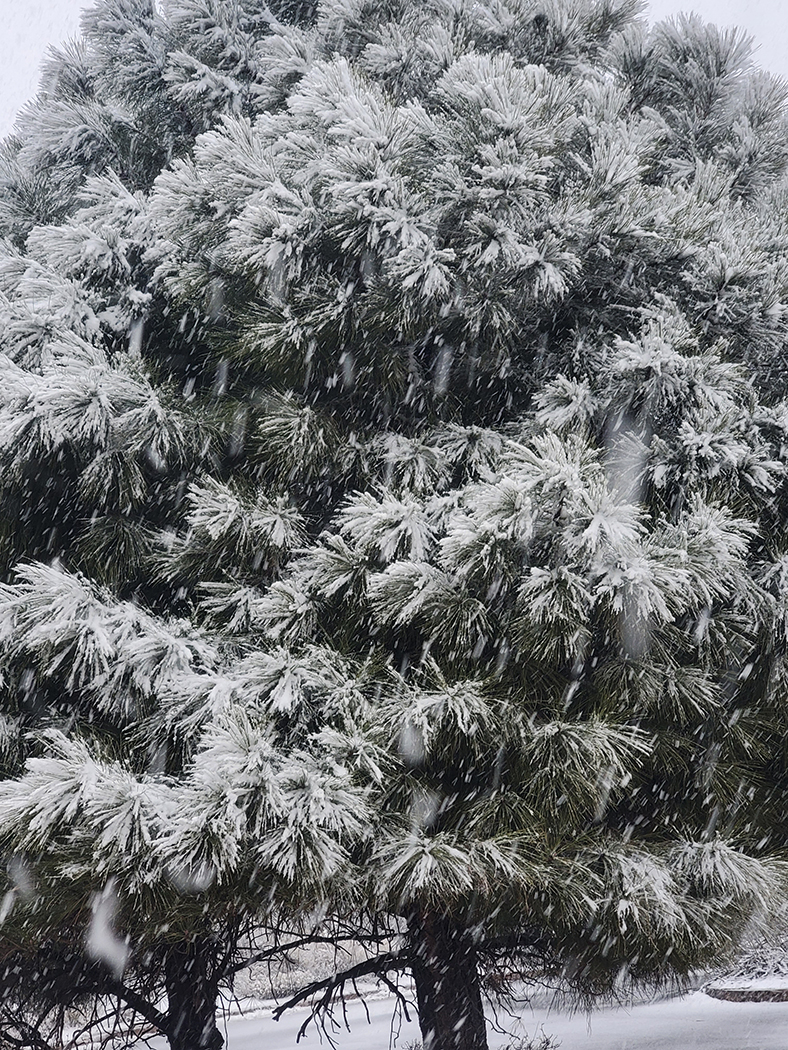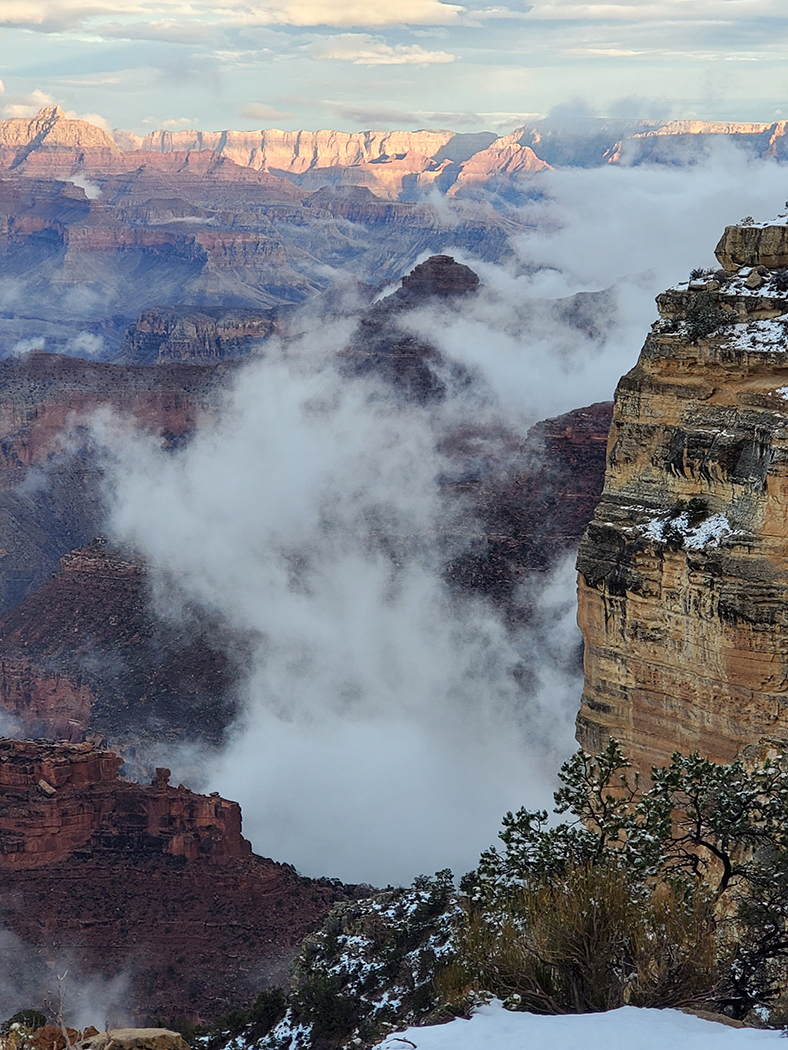By John & Kim Jaikes
The pictures of the Grand Canyon are beautiful, but this is a place you must see to truly appreciate. John had been to the Grand Canyon several times over the years, but as close as I had been was seeing the sign that says “You’ve come too far not to see it” along I-40 in Williams, AZ. Seeing the canyon in person is incredible! If it isn’t on your bucket list, you might want to consider adding it. While doing research for this story I found some pretty cool facts about this spectacular place.
At a mile deep, 277 miles long, and 18 miles wide, the Grand Canyon is bigger than the state of Rhode Island. The park measures 1,902 square miles in comparison to the 1,212 square miles of Rhode Island. With extensive fossil records, a multitude of unique geologic features, and rich archaeological history, the Grand Canyon is one of the most studied landscapes in the world. Carved by geological activity and erosion over 6 million years by the Colorado River, the oldest human artifacts found in the canyon are nearly 12,000 years old and date back to the Paleo-Indian period.
The Grand Canyon is extremely important to Native people in and around the Southwest. Sharing boundaries with three federally recognized tribes, there are also 11 tribes that have historic connections to the lands and resources found within Grand Canyon National Park. Visiting this beautiful spot, you can’t miss the strong Native American influence throughout the canyon’s place names and rim-side architecture. Around roughly 200 BC the Ancestral Puebloan people lived mostly in the four corners region of the western United States and migrated towards the Grand Canyon. By 500 AD the Puebloan people were building adobe houses along the canyon rim. Skeletons of these structures can still be seen today, but they are slowly succumbing to the harsh climate.
In 1903, then President Theodore Roosevelt visited the Grand Canyon for the first time and was deeply moved by the unique landscape. He signed a bill in 1906 proclaiming the area the Grand Canyon Game Reserve. In 1908 he made it a national monument. Of the Grand Canyon he said, “Leave it as it is. You cannot improve on it. The ages have been at work on it, and man can only mar it.” Because of the protections put on the canyon over the years it is still here, in all its glory, for us to enjoy now and for generations to come.
You might be surprised to know that the Grand Canyon can influence the weather. The elevation of the canyon spans from 2,000-8,000 feet, allowing it to experience a variety of weather conditions. The temperature generally increases by 5.5 degrees with each 1,000 feet loss in elevation. The two days we were there, we saw snow, sunshine, and clouds hanging above the rocks, and then witnessed a nearly full moon rise over the canyon rim. You can buy souvenirs, but don’t take them. Grand Canyon National Park is a World Heritage Site and belongs to everyone, so the rocks, plants, wood, and other artifacts must be left where they are for others to enjoy in the future.
There are estimated to be 1,000 caves tucked within the canyon with only 355 that have been recorded, and even fewer have been mapped or inventoried. The Cave of the Domes on Horseshoe Mesa is the only cave that is open to the public. An estimated 5.9 million people visit the Grand Canyon each year – a far cry from the annual visitation of 44,173 that visited the park when it was created in 1919. As the crow flies, the lodge on the North Rim and Grand Canyon Village on the South Rim are only about 10 miles apart, but to drive between them over the Colorado River and loop around the canyon, you will have a 215-mile trip taking five hours or more.
If you would like a more dramatic, rustic, uncrowded experience, you can visit Tuweep (also spelled Toroweap) Overlook. But be warned, this area can only be reached by negotiating difficult roads with a high-clearance vehicle. On the Havasupai reservation is a popular destination. Four spectacular spring-fed waterfalls pour out of the canyon’s walls into clear emerald green pools below (see photo). If you plan on going there, make sure to include an overnight stay, since the falls are a ten-mile hike. The Hualapai opened a Skywalk, which is a circular platform that extends 70-feet out above the canyon (see photo). The walkway is constructed of solid glass and enables visitors to walk out over 4,000 feet above the canyon’s floor.
A mile from the main entrance to the canyon is the welcoming community of Tusayan, nestled in the Kaibab Forest, which is the Gateway to the South Rim. While we were there, activities were limited, but that’s okay because there weren’t many tourists so we could drive into the pull-offs and enjoy the views without crowds. Our first stop was Mathers Point. After getting parked in a nearby lot, we walked a short distance to the most incredibly breathtaking view. On a clear day you can see 30+ miles to the east and 60+ miles to the west. Looking down into the canyon you can see a few small samples of the Colorado River, Phantom Ranch at the bottom of the canyon, and numerous trails that crisscross the landscape below.
On our first day there it had snowed, and this white snow really highlighted the red rocks. When it began to snow it looked a lot like Christmas, as the pine trees were covered, and John stopped and rolled down the window so I could take a picture of a small deer standing in the snow. He turned his head around when I talked to him but stayed put, so I was able to get a great shot. In the early evening, we started seeing elk, and they were just walking around, not afraid at all, like it was their job to stop and pose for our pictures.
On our second day there the sun came out, and the little fluffy clouds that hung over the canyon looked like giant cotton balls. It was stunning! People were friendly and, if you asked, they would take a picture of us together (and we would return the favor, of course). That night we checked what time the moon was coming up, then we returned to a pull-off we had been to earlier that day, where we watched a nearly full moon peak over the rim. We could see a flash down in the canyon, as someone was obviously down there, taking some pictures. We stayed long enough for the moon to gently start lighting the rocks below us. It was beautiful!
In the 1920s, Mary Elizabeth Jane Coulter was one of the very few female architects and designers of her day. She designed many landmark buildings and spaces for the Fred Harvey Company and the Santa Fe Railroad, most notably in the Grand Canyon National Park. Some of the buildings she designed that are still in the park are Hopi House, The Lookout Studio, Hermit’s Rest, Phantom Ranch, Desert View Watchtower, and Bright Angel Lodge. Her structures blend a number of themes, including Spanish Colonial and Mission Revival, along with Native American motifs and other rustic natural elements. Phantom Ranch, the only lodging below the rim, is a historic oasis nestled at the bottom of the canyon beside Bright Angel Creek. It can only be reached by mule, on foot, or by rafting the Colorado River.
The various ways to see the Grand Canyon aren’t endless, but they’ll leave you awestruck with memories that will last a lifetime! You can take to the air in a helicopter or hot air balloon, or even skydive out over the canyon. A little tamer would be hiking the numerous trails, horseback riding, or taking a mule to the bottom. Whitewater rafting on a hot summer day would surely feel good. You can take a scenic train ride from Williams to the canyon edge, then get on a bus or jeep tour. Most of these activities will require booking months in advance, so plan ahead before you go.
Grand Canyon is one of the world’s premier natural destinations, attracting about five million visitors per year from all over the globe. The South Rim is open 24/7 year-round, but the North Rim is closed for the winter. When planning your vacation, the National Park Service Mobile App is a great tool for planning your trip and can be used as a handy guide during your visit. With a little time spent planning and making reservations ahead of your trip, I promise, when you stand on that edge and look out over this amazing hole in the earth, it will all be worth the work and the wait.

